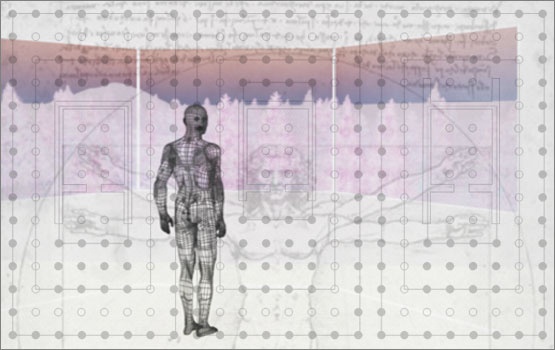Mixed Reality
Postei anteriormente informando sobre o simposio Mixed Reality:
“Mixed Realities is an exhibition and symposium that explores the convergence—through cyberspace—of real and synthetic places made possible by computers and networks. Mixed Realities links and overlays the Huret & Spector Gallery (Boston), Turbulence.org, and Ars Virtua (Second Life). Second Life is a shared, synthetic, 3-D environment through which people can interact in real-time by means of a virtual self or avatar. Although it’s an imaginary place, it is often able to “masquerade as real” (Richard Bartle) because it approximates reality persuasively enough to facilitate player immersion. Audience members – who will be embodied as avatars in Second Life, browsing the works at turbulence.org, and/or be physically present in the gallery – will interact with the works and with one another. Thus, Mixed Realities will enable people who are distributed across multiple physical and virtual spaces to communicate with one another and share experiences in real time.”
Post do Networked_Performance traz atualizações sobre o evento. O interessante aqui é vermos mais uma vez como a dimensão de hibridização entre o “mundo real” e o “mundo virtual” (Geovector, por exemplo, cujo lema é “click on the real world”), reconfiguram os lugares criando novos sentidos e usos. Vejam também o blog “Place of Social Media” de Eric Gordon.
Trechos dos temas abordados na exposição (vejam link acima para detalhes):
(…) Each of the pieces points to changing notions of place. In geographical terms, place is experienced space. It is meaningful space, enhanced by personal encounter, perpetuated by memories. But when space is ‘neither here nor there,’ but a combination of the two, how does place take shape? Do digital spaces have the same capacity to be experienced as physical spaces? And what’s at stake? We might find answers to this question as we address the concepts of immersion and presence. Do we need to be immersed and present to experience? Consider Heidegger’s notion of dasein, or being there. For Heidegger, being was tied to presence. Human experience was always grounded in da-sein, never just sein. Is dasein possible in a mixed reality?
And finally, we might talk about the problem of attention. Multiple realities, multiple places, would seem to pull our attention in multiple directions. Does this work point to the loss of focus? Is it possible to be present, without paying attention? Or, do we need only to reconsider the current economy of attention? Perhaps, mixed realities points to new structures of attention, where we can distribute our payments for enhanced benefit.(…)”.

